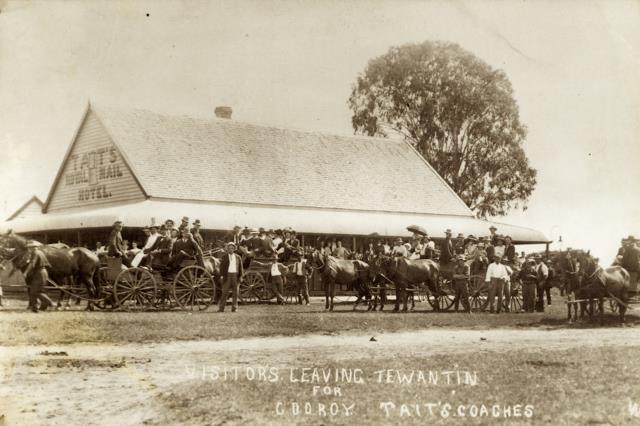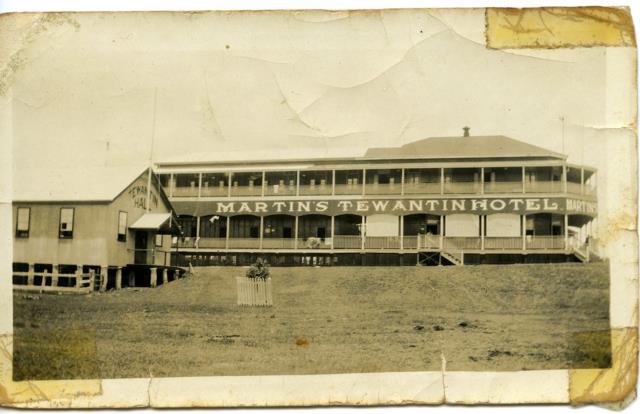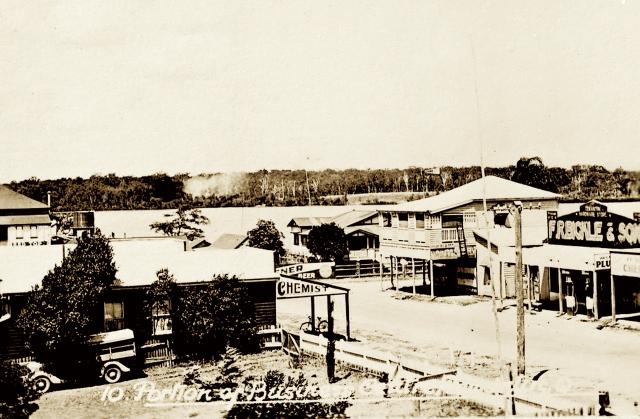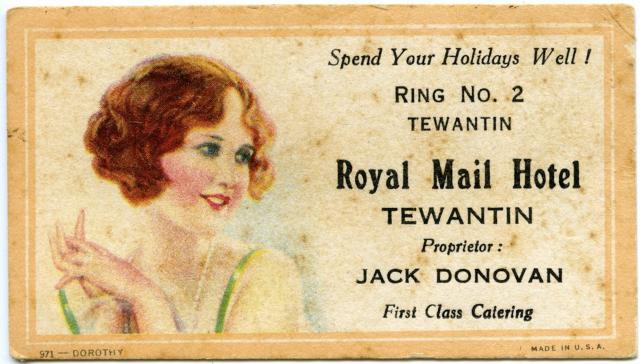By early 1870, the McGhie, Luya and Co timber partnership had built an extensive sawmill at Mill Point on the shores of Lake Cootharaba with a settlement growing up quickly around it, but as timber was sawn and towed on pontoons downriver where it was transferred to paddle-steamers for the treacherous trip across the bar, and then on to Brisbane or Maryborough, the first real township in what would become Noosa Shire began to take shape.
On the last of the Laguna estuary’s deep water stretch, a new port town was starting to grow around the wharves built for the timber transport ships Gneering, Culgoa, and others soon to follow. As the timber transports took over the river, the local Kabi Kabi called the emerging timber town Dauwadhun, meaning “place of dead logs”, which in white man phonetics became Tewantin, but for years it was known simply as The Shortcut.
In 1868, in response to the demand for transport to the goldfields, Cobb and Co began a twice-weekly coach run from Brisbane to Gympie along the newly completed Gympie Road, pretty much following the line of the Bruce Highway today. But it was a torturous journey over 10 stages, and there were many voices in the business communities of Brisbane, Gympie and Maryborough who favoured the development of a coach route between Gympie and the Noosa River, with passengers and freight connecting there with a steamship for Brisbane, a much faster and more comfortable journey, as long as you survived the crossing of the Noosa bar.
The loudest of those voices belonged to Walter Hay, who had already blazed a trail from Gympie to Lake Cootharaba, and who believed that creating a coach road all the way to the steamship wharf would not be a huge undertaking. Those voices grew still louder in 1869 when the Noosa estuary was surveyed for the first time by Commander GP Heath, Port Master of Queensland, and his depth charts made navigation much safer.
While the Queensland Lieutenant Surveyor Clarendon Stuart was tasked with planning a town site for Tewantin, Walter Hay was appointed overseer of the construction of a coach road between Gympie and the new town. Always a smart operator, Hay made sure that before he went bush to make a road, he had selected some prime land for conditional purchase around the proposed township, the survey of which had not yet been completed. In this he was not alone. Another to attempt to grab a piece of the pie was one Grainger Ward, who had extensive interests in timber and cattle around Gympie. He and Walter Hay would develop a fierce rivalry in the battle to become Tewantin’s first land baron.
Walter Hay was building the Gympie–Tewantin “shortcut” in June 1870 when his twins were born and his wife Mary Ann died hours later. With no communications reaching his rough bush camp, the tragic news was almost a week old when he received it, and Mary Ann had already been laid to rest. There are no reports as to whether he took time off to mourn, or simply lost himself in the tough, back-breaking work of land clearing, but the project was completed on time. However, when he eventually got back to the Gympie Lands Office in October, he was not a happy man.
A newly widowed dad with eight children under 14 to care for, Walter Hay probably had every reason to be angry about the way life was unfolding, but his specific issue when he called at the Lands Office was that in his absence, the survey of Tewantin township by Clarendon Stuart had been completed and had resumed much of his and Grainger Ward’s selections. To add insult to injury, of what was left, Ward’s selection now seemed to overlap Hay’s.
After considerable argy-bargy, both Ward and Hay were allowed to make new selections, with Hay also being awarded “rents and survey fees”. Ward selected land fronting the river north of the town site (the Ward Estate, on which he built Tewantin’s first proper home), while Hay chose 350 acres of Noosa River frontage on the other side of Lake Doonella, reached by crossing a narrow ford at low tide.
Directly across the river at Colloy, more than 150 timber-getters had a sprawling campsite, but all supplies that came over the Noosa bar in steamers went straight to the timber wharf at Tewantin, there to be distributed around the town’s businesses, and by 1873 there were several.
The “shortcut” coach service between Gympie and Tewantin started in 1871, taking about eight to 10 hours, and timed so that arrivals and departures in Tewantin matched the movements of the paddle-steamer Culgoa’s Brisbane runs. The mail service began early in 1873, around the same time the telegraph office opened and a temporary police station was built after some “licentious and drunken behaviour” over the Christmas–New Year period. Tewantin saw quite a bit of this kind of behaviour in its pioneer days, and while there was only one licensed establishment — a bar with a few rooms for travellers out the back — there were several sly grog joints, gambling dens and brothels spread along the town’s two commercial streets, veering off at right angles from the massive fig tree above the river bend.
Queensland Governor Normanby passed through in May 1873, taking the shortcut back to Brisbane from Gympie, and inspected the Elanda timber mill and the McGhie, Luya loading facility at Colloy, having overnighted at postmaster Rob Richardson’s Tewantin pub. Two months after Governor Normanby’s visit, a boiler exploded at the Elanda mill, killing five men in horrible circumstances. An eyewitness reported he had watched “Phillip Molloy limp away with his feet blown off, his brother Patrick dreadfully scalded”, while “Charles Long was picked up dead, Joseph White’s leg was blown off and Patrick Tierney was scalded so badly he could not live”.
The tragedy further added to a sense of foreboding around Tewantin, even as the timber men held drunken wakes for their mates up and down the streets. In some ways, it was a sad and sordid place, but it was also a frontier town that exuded hope for the future, even in the dark depths of the present, and an increasing number of travellers gave it good reviews. One such was Gympie businessman and politician James Kidgell, who passed through in August 1875 and penned the following for the “Newsa Notes” column of the Gympie Times:
“Having some little spare time at Tewantin I send you a few notes as to the progress of this rising township, as it may without exaggeration be termed. The road from Gympie to this place may now be pronounced in good travelling condition, and a well-horsed buggy might be driven through with ease in six or seven hours. There are certainly two or three bad places to cross, but with ordinary care there is no danger and no fear of getting bogged… I notice a great improvement in every respect since my last visit here. The main thoroughfare begins to present a street-like appearance …
“As a proof of the good opinion entertained as to the future of this place, I might mention that every allotment in the surveyed township has been purchased, and there are numerous enquiries from persons wishing to make similar investments. The scrub is being rapidly cleared away from the point, which has not only the effect of driving away in a great, measure those troublesome companions and flies and mosquitoes, but also imparts additional beauty to the scenery by affording an excellent view of the lake on the southern side of the township.
“Want of good accommodation has been hitherto the general complaint of visitors to Tewantin. It is satisfactory to know that this deficiency no longer exists, and the traveller … need no longer be afraid of being compelled to undergo a forced abstinence from those creature comforts so indispensable to their welfare.”
And so it remains today. Happy birthday, Tewantin!










